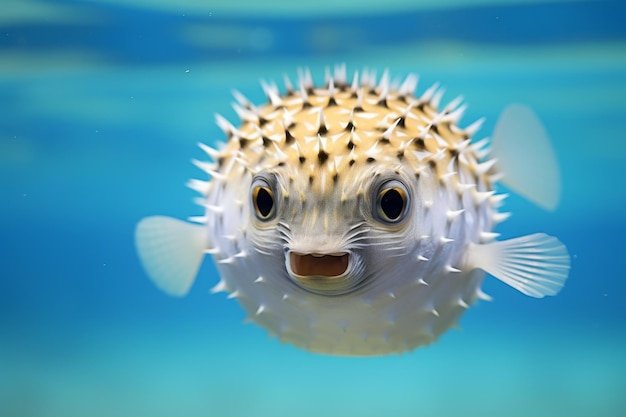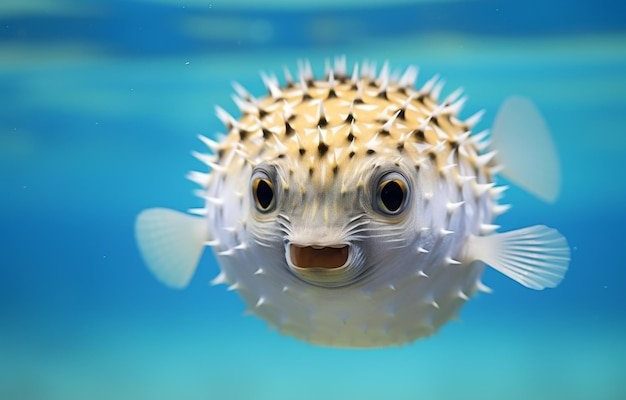
You might be wondering, why all the fuss about a fish? Well, the pufferfish isn’t just a marine oddity; it’s also a creature steeped in history, lore, and culinary art. Some cultures regard it as a delicacy, while others see it as a dangerous symbol. Let’s dive into the fascinating world of pufferfish myths and cultural beliefs, revealing what’s real and what’s simply fishy.
Pufferfish in Folklore and Mythology
Many cultures have woven the pufferfish into their folklore. Take Japan, for example. The fugu—a dish made from pufferfish—is not just food; it’s a ritual. The preparation of fugu is steeped in tradition and requires highly trained chefs. If done incorrectly, it can be fatal due to the toxic substance tetrodotoxin found in certain pufferfish. Yet, despite the danger, the thrill of eating fugu attracts diners seeking a unique culinary experience.
In some Pacific Island cultures, pufferfish are seen as guardians of the ocean. Stories tell of pufferfish as mystical creatures that pose tests of bravery. These narratives celebrate the fish’s unique features, portraying it as a symbol of both danger and beauty. It’s fascinating how a single species can carry such contrasting meanings across different cultures.
The Toxic Nature of Pufferfish
One of the most well-known myths about pufferfish is their toxicity. While it’s true that some pufferfish species are dangerous due to tetrodotoxin, not all variations are. The myth often generalizes all pufferfish as deadly, but actually, it depends on their species and preparation. Many people imagine a pufferfish as a cute, bubbly creature with a lethal punch, and while some do carry that punch, knowledge is key here.
Tetrodotoxin is roughly 1,200 times more toxic than cyanide! This has led to the belief that all pufferfish are harmful. In reality, chefs trained in preparing fugu use only specified parts of the fish that are safe, transforming the potential poison into a delicacy. So, while it’s wise to approach pufferfish with caution, it’s also important to separate myths from facts.
Symbolism and Cultural Significance
In various cultures, the pufferfish carries unique symbolism. In Japan, for example, it’s often associated with artistry and skill, reflecting the accuracy required in its preparation. The careful attention given to serving fugu reflects dedication and mastery in culinary arts. Meanwhile, other cultures might view the pufferfish as a representation of adaptability. Its ability to inflate symbolizes resilience and the ability to cope with stressors in the environment.
In some African cultures, the pufferfish is seen as a cautionary figure in stories about the ocean’s dangers. Its spiky exterior serves as a metaphor for protection; a lesson that what seems harmless can hide significant risks beneath the surface. Isn’t it interesting how a single fish can convey such deep meanings across different communities?
Connection to the Environment
Pufferfish aren’t just fascinating because of their appearance; they play an important role in their ecosystems as well. They help maintain the balance within marine environments, eating algae and invertebrates that could otherwise overpopulate. This connection to environmental health often translates into cultural beliefs surrounding their protection.
In some coastal communities, pufferfish are viewed as indicators of ocean health. When pufferfish populations are thriving, it’s a good sign that the ecosystem is in balance. This awareness fosters respect for marine life and encourages sustainable fishing practices. It’s amazing how intertwined our beliefs can be with the health of our planet!
Modern Misunderstandings and Media Influence
With the rise of social media and entertainment, pufferfish have been featured in various forms of popular culture, often exaggerating their myths. Movies, cartoons, and documentaries sometimes depict them as irresistible creatures or deadly foes, leading many to misunderstand how they really live and thrive.
These portrayals can warp perceptions, making many think all pufferfish are inherently dangerous or cartoonishly cute. It’s crucial to remember that while pufferfish have unique traits, they are complex animals with specific needs. Education is key to appreciating them without falling into the traps of popular myths.
The myths and cultural beliefs surrounding the pufferfish remind us of our relationship with the natural world. They tell stories of danger and beauty, tradition and innovation, and the delicate balance of marine ecosystems. As we navigate these narratives, it’s essential to approach the pufferfish with respect and curiosity, understanding that beneath its quirky exterior lies a vital part of our underwater landscapes.
So, whether you’re enjoying fugu in a restaurant, admiring a pufferfish on a documentary, or simply appreciating this unique creature, remember the blend of myth and reality. The pufferfish is more than just a fish; it’s a vibrant symbol of culture, nature, and the stories we tell about them.

